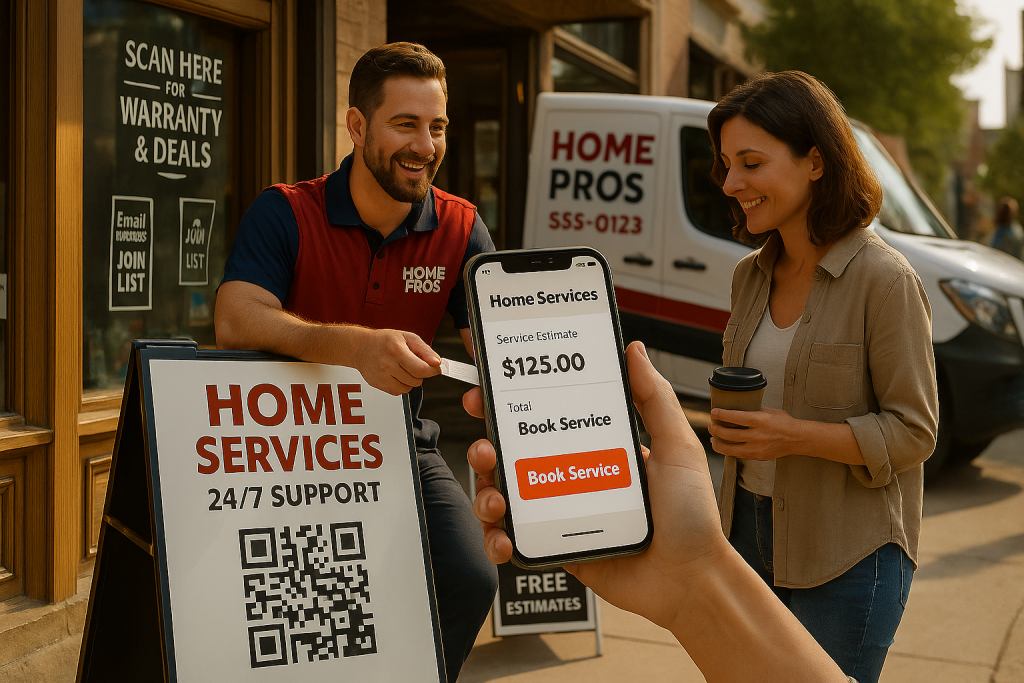In an era where the corporate battlefield is more competitive than ever, B2B branding emerges not just as a mere marketing tactic, but as the very essence of a business’s identity and its key to long-term success. Gone are the days when branding was confined to the realms of B2C markets. Today, in the intricate corridors of B2B interactions, branding stands as a fundamental force that shapes perceptions, builds relationships, and drives decisions.
Why is B2B Branding Paramount?
- Differentiation in a Saturated Market: In the vast sea of businesses offering similar products and services, a strong B2B brand carves out a unique space. It transcends beyond products and services, embodying the values, ethos, and vision of the company, thus differentiating it in a saturated market.
- Building Trust and Credibility: In B2B transactions, where decisions are deeply scrutinized and investments are significant, trust is the cornerstone. A well-crafted brand fosters trust, signaling reliability, quality, and expertise.
- Facilitating Long-Term Relationships: B2B engagements are not mere transactions; they are partnerships that thrive on long-term relationships. A resonant brand fosters these relationships, aligning its narrative with the aspirations and challenges of its clients.
- Empowering Marketing and Sales Strategies: A robust B2B brand amplifies marketing efforts, providing a clear message that resonates with target audiences. It empowers sales teams with a compelling story to tell, making their pitch more convincing and effective.
- Enhancing Perceived Value: A strong brand elevates perceived value, allowing companies to transcend the bounds of price wars and compete on aspects like quality, innovation, and service.
As we delve into the intricacies of B2B branding, we find it’s not just about making a mark; it’s about creating a legacy, a narrative that echoes the purpose and prowess of a business in the most compelling manner.
Market Trends: Evolving Dynamics of B2B Branding and Marketing
The landscape of B2B branding and marketing is continually evolving, shaped by technological advancements and changing market dynamics. Here’s a glimpse into the current trends:
- Digital Transformation: The digital wave has revolutionized B2B branding. Digital platforms have become pivotal in brand building, offering new avenues for engagement, content distribution, and customer interaction.
- AI and Machine Learning: AI is no longer a futuristic concept but a present-day tool reshaping B2B marketing. From personalized marketing campaigns to predictive analytics, AI is enabling brands to make data-driven decisions and offer tailored experiences to clients.
- Content Marketing: The power of content in B2B branding has magnified. Informative and insightful content, whether in the form of whitepapers, webinars, or blogs, is crucial in establishing thought leadership and enhancing brand value.
- Customer Experience (CX): CX is the new battleground for B2B brands. Providing an exceptional and seamless customer journey, from the first point of contact to post-sales support, is vital in brand building.
- Sustainability and Corporate Responsibility: B2B brands are increasingly embracing sustainability. A brand that aligns with environmental and social governance principles appeals more to modern clients, who prioritize responsible business practices.
- Data Privacy and Security: With growing concerns over data breaches, B2B brands are focusing on ensuring data privacy and security, enhancing their credibility and trustworthiness.
- Integration of Sales and Marketing: The synergy between sales and marketing teams has become crucial. Integrated strategies ensure a cohesive brand message, leading to better conversion rates and customer retention.
These trends signify a shift from traditional branding strategies to more dynamic, data-driven, and customer-centric approaches. B2B brands that adapt to these evolving trends are poised to thrive in the competitive marketplace of today and tomorrow.
Brand Differentiation Strategies: Standing Out in the B2B Arena
In the fiercely competitive B2B landscape, differentiation is not just beneficial; it’s essential. The following practical strategies can help B2B brands distinguish themselves and gain a competitive edge:
- Leveraging Unique Value Propositions (UVP): Identify and articulate what makes your brand unique. This could be an innovative product feature, exceptional service quality, or a unique approach to problem-solving. Ensure that your UVP resonates with your target audience’s specific needs and challenges.
- Thought Leadership: Establish your brand as a thought leader by sharing insightful content, participating in industry discussions, and offering innovative solutions to sector-specific problems. This positions your brand as an authoritative voice in your field.
- Customer-Centric Approach: Tailor your services and solutions to meet the specific needs of your clients. A customer-centric approach not only differentiates your brand but also fosters loyalty and long-term relationships.
- Storytelling and Brand Narrative: Develop a compelling brand narrative that goes beyond the features and benefits of your products or services. Share your brand’s journey, values, and vision through storytelling that connects emotionally with your audience.
- Innovative Marketing Tactics: Use creative and unconventional marketing tactics to stand out. This can include interactive digital campaigns, immersive experiences, or leveraging emerging technologies like AR/VR.
- Niche Specialization: Focus on a specific niche or industry segment where you can offer specialized expertise. Being a leader in a particular niche can be more effective than being a generalist in a broad market.
- Sustainability and Social Responsibility: Embrace and communicate your commitment to sustainability and social responsibility. This appeals to the growing number of clients who prefer doing business with environmentally and socially responsible brands.
- Personalization and Customization: Use data and analytics to personalize your marketing and sales efforts. Tailored experiences and solutions can significantly differentiate your brand in a market of one-size-fits-all solutions.
Building Trust and Credibility in B2B Relationships
Trust and credibility are the bedrock of successful B2B relationships. Here’s how businesses can build and maintain these crucial elements:
- Consistent Quality Delivery: Consistently delivering high-quality products or services is fundamental in building trust. This creates reliability, a critical factor for B2B clients.
- Transparency and Open Communication: Be transparent in your business practices, including pricing, product capabilities, and policies. Open communication about both successes and failures fosters trust.
- Customer Testimonials and Case Studies: Showcase customer testimonials and detailed case studies. This provides social proof and demonstrates your ability to deliver results.
- Professionalism in Every Interaction: Maintain professionalism in all business dealings. This includes prompt responses, respectful communication, and honoring commitments.
- Educational Content and Resources: Provide valuable and educational content that helps clients understand your industry better. This positions your brand as a helpful resource and builds credibility.
- Partnership Approach: Treat your clients as partners rather than just customers. Involve them in decision-making processes and value their feedback, creating a collaborative environment.
- Certifications and Accreditations: Obtain industry-specific certifications and accreditations. This demonstrates your commitment to maintaining high standards in your industry.
- Thought Leadership and Industry Participation: Engage actively in industry events, panels, and discussions. Share insights and knowledge that benefit the industry, enhancing your brand’s credibility.
Building trust and credibility is a continuous process. It requires consistent effort and a genuine commitment to the values and needs of your B2B clients.
Visual and Verbal Branding: Crafting a Cohesive B2B Identity
In B2B marketing, the power of visual and verbal branding cannot be overstated. These elements form the core of a brand’s identity, playing a crucial role in how it is perceived and remembered in the business world.
Visual Branding: More Than Just Aesthetics
- Logo and Design Elements: Your logo is often the first point of interaction with your brand. It should be distinctive, memorable, and reflective of your brand’s values and personality. Complementary design elements like color palettes, typography, and imagery styles also play a significant role in creating a cohesive visual identity.
- Consistency Across Channels: Consistency in visual elements across all touchpoints – website, social media, product packaging, and marketing materials – reinforces brand recognition. This consistency helps build familiarity and trust over time.
- Visual Storytelling: Leverage visual storytelling to convey complex business concepts in an engaging and easily digestible manner. Infographics, videos, and interactive content can be particularly effective.
- Branding Beyond the Visual: Think beyond traditional visual elements to include sensory branding – like sounds, textures, or even scents – that can be associated with your brand, especially in physical spaces or products.
Verbal Branding: The Voice Behind the Brand
- Tone and Personality: Establish a brand voice that resonates with your B2B audience. This could range from professional and authoritative to friendly and approachable, depending on your industry and target audience.
- Consistent Messaging: Consistency in messaging reinforces your brand identity. Ensure that your brand voice is uniform across all written communications, including marketing copy, social media posts, and customer service interactions.
- Storytelling and Content: Use storytelling to make your brand more relatable. Share stories of challenges, successes, and innovations that align with your brand values and resonate with your target audience.
- Engagement Through Language: Utilize language that engages and involves your audience. This could include industry jargon for a niche audience or clear and simple language for broader appeal.
Case Studies: Successful B2B Branding in Action
Case Study 1: IBM’s Smarter Planet Initiative
- Strategy: IBM launched the ‘Smarter Planet‘ initiative to position itself as a leader in innovative technology solutions addressing global issues.
- Execution: The campaign used a mix of thought-provoking content, compelling visuals, and strategic partnerships.
- Outcome: It successfully reinforced IBM’s image as a forward-thinking, solution-oriented brand, driving engagement and sales.
Case Study 2: Slack’s Relatable Brand Voice
- Strategy: Slack differentiated itself in the crowded communication tool space through a unique, conversational brand voice.
- Execution: Slack’s branding across its platforms and communications is friendly, witty, and relatable, making technical communication feel human and approachable.
- Outcome: This approach helped Slack build a strong, loyal community, contributing to its rapid growth and high user retention rates.
Case Study 3: HubSpot’s Inbound Marketing
- Strategy: HubSpot’s strategy revolved around creating a brand synonymous with inbound marketing.
- Execution: Through comprehensive, high-quality content, HubSpot established itself as the go-to resource for inbound marketing, coupled with consistent visual and verbal branding.
- Outcome: HubSpot’s commitment to educational content solidified its brand authority, driving substantial growth and customer loyalty.
These case studies demonstrate the impact of well-executed visual and verbal branding strategies in creating a distinct and memorable brand identity in the B2B space.
The Path Forward in B2B Branding
B2B branding in 2024 and beyond is about much more than logos and corporate colors. It’s about creating a brand that resonates deeply with its audience, leveraging the latest technological advancements, and staying true to its core values.
Incorporating these strategies into your branding efforts can transform the way your business is perceived in the market. As we look to the future, it’s clear that the brands willing to innovate, engage authentically, and adapt swiftly will be the ones that thrive.
As we conclude, remember that your brand is your story, your ethos, and your promise to your customers. It’s the essence of what you stand for and how you are perceived in the marketplace. The future of B2B branding is bright for those who are willing to adapt, innovate, and engage with authenticity and purpose.
Need a hand in reshaping your brand for the future? Our team at The Hyper Fuel is here to help. Contact us for a consultation and let’s work together to elevate your B2B brand.





